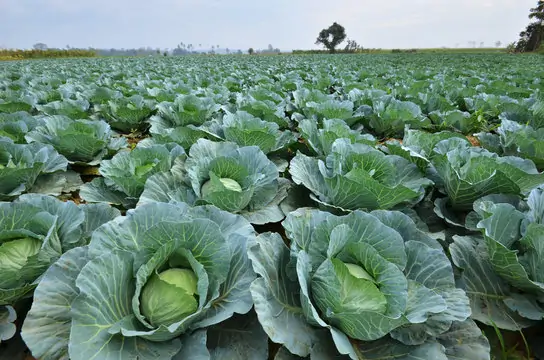Cabbage farming can be profitable in Kenya given the high demand for the vegetable locally and farmers can make profits of about Sh100,000 to Sh300,000, per acre, depending on the yields and the prices.
In the Facebook group iMaDe FARMs Market, an expert has shared some facts that every farmer intending to venture into cabbage farming should know.
They are:
Cabbage (Brassica oleracea) is a cool-season vegetable that belongs to the Brassicaceae family. It is closely related to other leafy greens like kale, broccoli, and Brussels sprouts.
Cabbage farming can give you a 100 percent profit and that’s even after deducting your expenses if you have the RIGHT KNOW HOW on the market, crop planting calendar, seedling preparation, water requirement, pests and disease control and the technic of harvesting which you can get from our manuals.
Since cabbage matures in about 3 months and it’s a popularly consumed vegetable, you can make A VERY GOOD INCOME every year!
Cabbage can be grown in both spring and fall seasons, but it prefers cooler temperatures. It thrives in regions with temperatures between 7°C to 24°C.
Farmer finds success in mushroom farming after failed chicken, vegetable businesses
Cabbage requires full sun for optimal growth. It should receive at least 6 hours of direct sunlight per day.
Before planting cabbage, prepare the soil by incorporating organic matter like compost or well-rotted manure. Cabbage prefers a fertile, well-draining soil with a pH between 6.0 and 7.5.
Cabbage can be grown from seeds or transplants. If starting from seeds, sow them indoors 6 to 8 weeks before the last expected frost date. Transplants can be planted outdoors after the danger of frost has passed.
When planting cabbage, space the plants 30 to 60 cm apart, depending on the variety. Rows should be spaced about 60 to 90 cm apart.
Cabbage plants require consistent moisture. Water them regularly, providing about 2.5 to 3.8 cm of water per week. Avoid overwatering, as it can lead to root rot.
Mulching around cabbage plants helps to conserve moisture, suppress weeds, and regulate soil temperature. Use organic mulch, such as straw or shredded leaves, to maintain soil moisture.
Cabbage is a heavy feeder and benefits from regular fertilization. Apply a balanced vegetable fertilizer before planting and side-dress with nitrogen-rich fertilizer when the plants are about halfway to maturity.
Pests such as cabbage worms, aphids, and flea beetles can damage cabbage plants. Monitor your plants regularly and take appropriate measures, such as using insecticidal soap or introducing beneficial insects, to control pest infestations.
Harvesting time varies depending on the cabbage variety and your growing conditions. Generally, cabbage heads are ready for harvest when they reach a firm, solid consistency. Cut the heads off at the base using a sharp knife!








